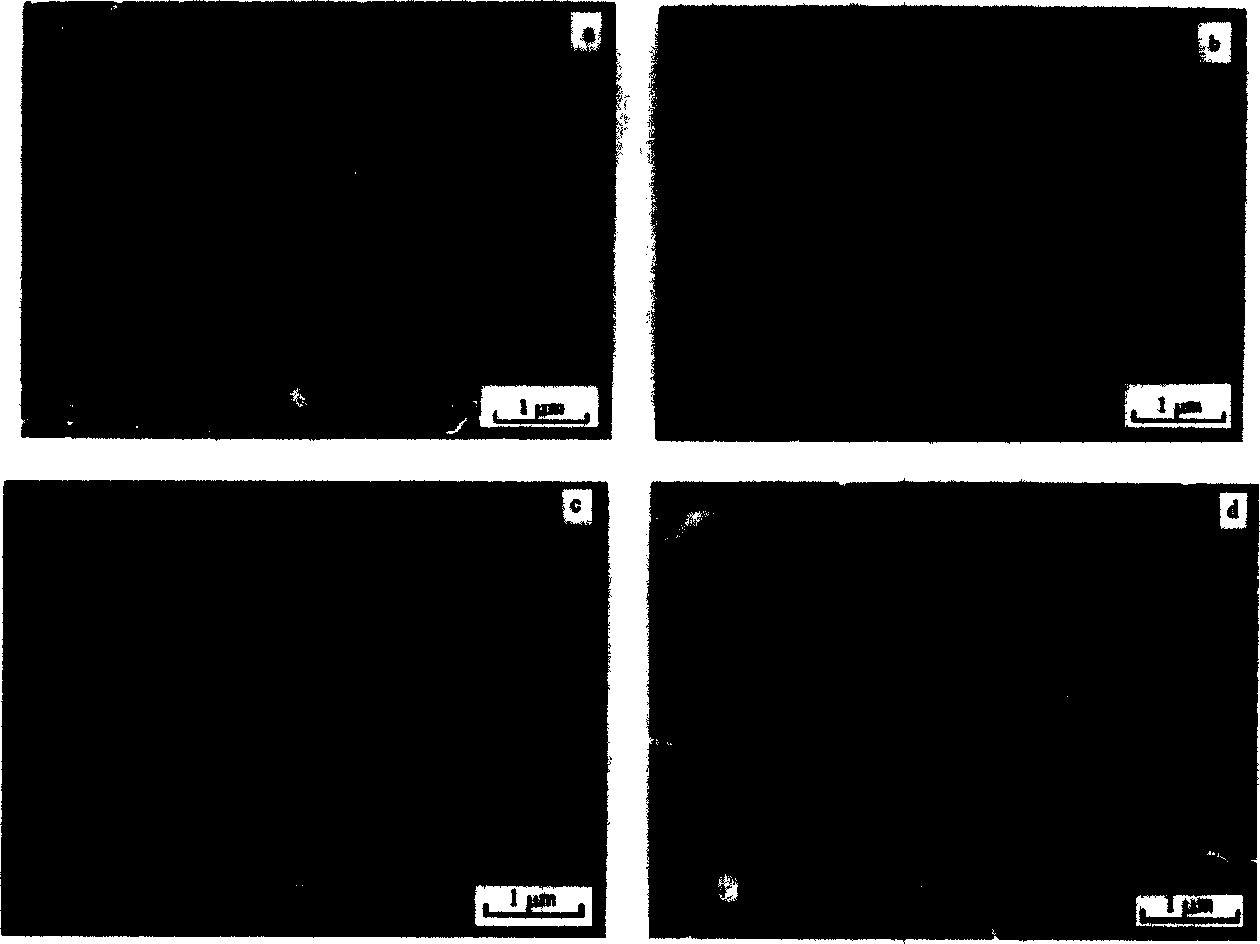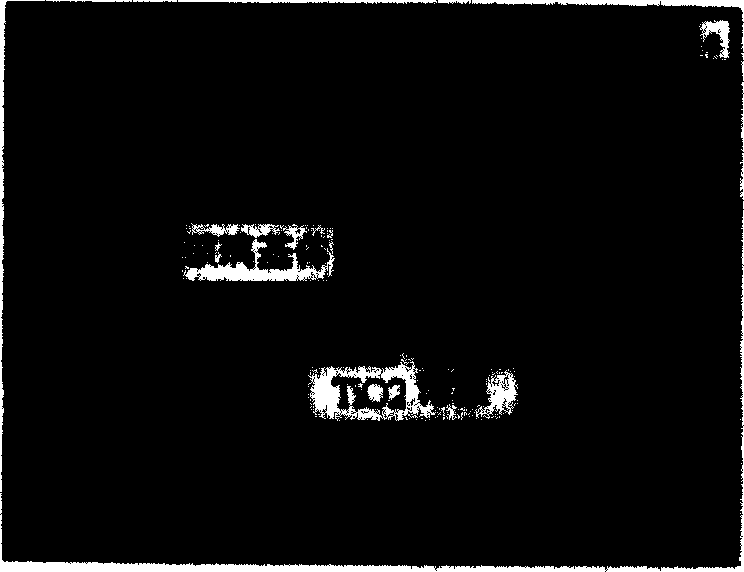In-situ preparing method for composite TiO2 and SiO2 thin film as photo-catalyst
A composite film, photocatalyst technology, applied in catalyst activation/preparation, chemical instruments and methods, physical/chemical process catalysts, etc., can solve the problems of high cost, difficult separation and recovery of powder, secondary pollution, etc.
- Summary
- Abstract
- Description
- Claims
- Application Information
AI Technical Summary
Problems solved by technology
Method used
Image
Examples
Embodiment 1
[0045] Ammonium hexafluorotitanate and boric acid are used as raw materials to prepare aqueous solutions of ammonium hexafluorotitanate and boric acid respectively, and then the two aqueous solutions are mixed according to a set ratio, stirred evenly to prepare a precursor solution. The molar concentrations of ammonium hexafluorotitanate and boric acid in the resulting final solution were 0.1M and 0.3M respectively. After immersing the clean quartz glass sheet in the above prepared precursor solution at room temperature of 25°C, hang it vertically for 48 hours , taken out and rinsed with deionized water, dried, and then heat-treated at 700°C for 1 hour to obtain TiO 2 with SiO 2 Composite thin film photocatalyst, photocatalytic activity test results show that: the prepared TiO 2 with SiO 2 The composite thin film photocatalyst has good photocatalytic activity at 700℃. Its apparent rate constant is 6.20×10 -3 (min -1 ).
Embodiment 2
[0047] In order to examine the influence of heat treatment temperature on film quality and photocatalytic activity, except that the heat treatment temperature is different, other experimental conditions such as the concentration of ammonium hexafluorotitanate and boric acid, reaction temperature and time, heat treatment time, etc. are all exactly the same as in Example 1. The prepared samples were heat-treated at 100, 300, 400, 500, 600, 700, 800 and 900 °C for 1 hour to obtain TiO 2 with SiO 2 Composite thin film photocatalyst, photocatalytic activity test results show that: the prepared TiO 2 with SiO 2 The composite thin film photocatalyst has the highest photocatalytic activity at 700 °C. Figure 4 Indicates the heat treatment temperature for TiO 2 with SiO 2 Effect of composite thin films on photocatalytic activity. from Figure 4 It can be seen that when the heat treatment temperature is lower than 400 °C, the film has almost no photocatalytic activity, which is du...
Embodiment 3
[0049] In order to test the influence of heat treatment time on film quality and photocatalytic activity, except that heat treatment time is different, other experimental conditions such as the concentration of ammonium hexafluorotitanate and boric acid, reaction temperature and time, heat treatment temperature, etc. are all exactly the same as in Example 1. The prepared samples were heat-treated at 700°C for 0.5, 1, 2, 3, 5 and 10 hours respectively to obtain TiO 2 with SiO 2 Composite thin film photocatalyst, photocatalytic activity test results show that: the prepared TiO 2 with SiO 2 The composite thin film photocatalyst has the highest photocatalytic activity after heat treatment at 700°C for 1-2 hours. When the heat treatment time is less than 1 h, the film has no good photocatalytic activity, which is due to the poor crystallization of the film sample and the SiO 2 caused by low content. When the heat treatment time is higher than 3 hours, the photocatalytic activit...
PUM
| Property | Measurement | Unit |
|---|---|---|
| particle diameter | aaaaa | aaaaa |
| particle diameter | aaaaa | aaaaa |
Abstract
Description
Claims
Application Information
 Login to View More
Login to View More - R&D
- Intellectual Property
- Life Sciences
- Materials
- Tech Scout
- Unparalleled Data Quality
- Higher Quality Content
- 60% Fewer Hallucinations
Browse by: Latest US Patents, China's latest patents, Technical Efficacy Thesaurus, Application Domain, Technology Topic, Popular Technical Reports.
© 2025 PatSnap. All rights reserved.Legal|Privacy policy|Modern Slavery Act Transparency Statement|Sitemap|About US| Contact US: help@patsnap.com



